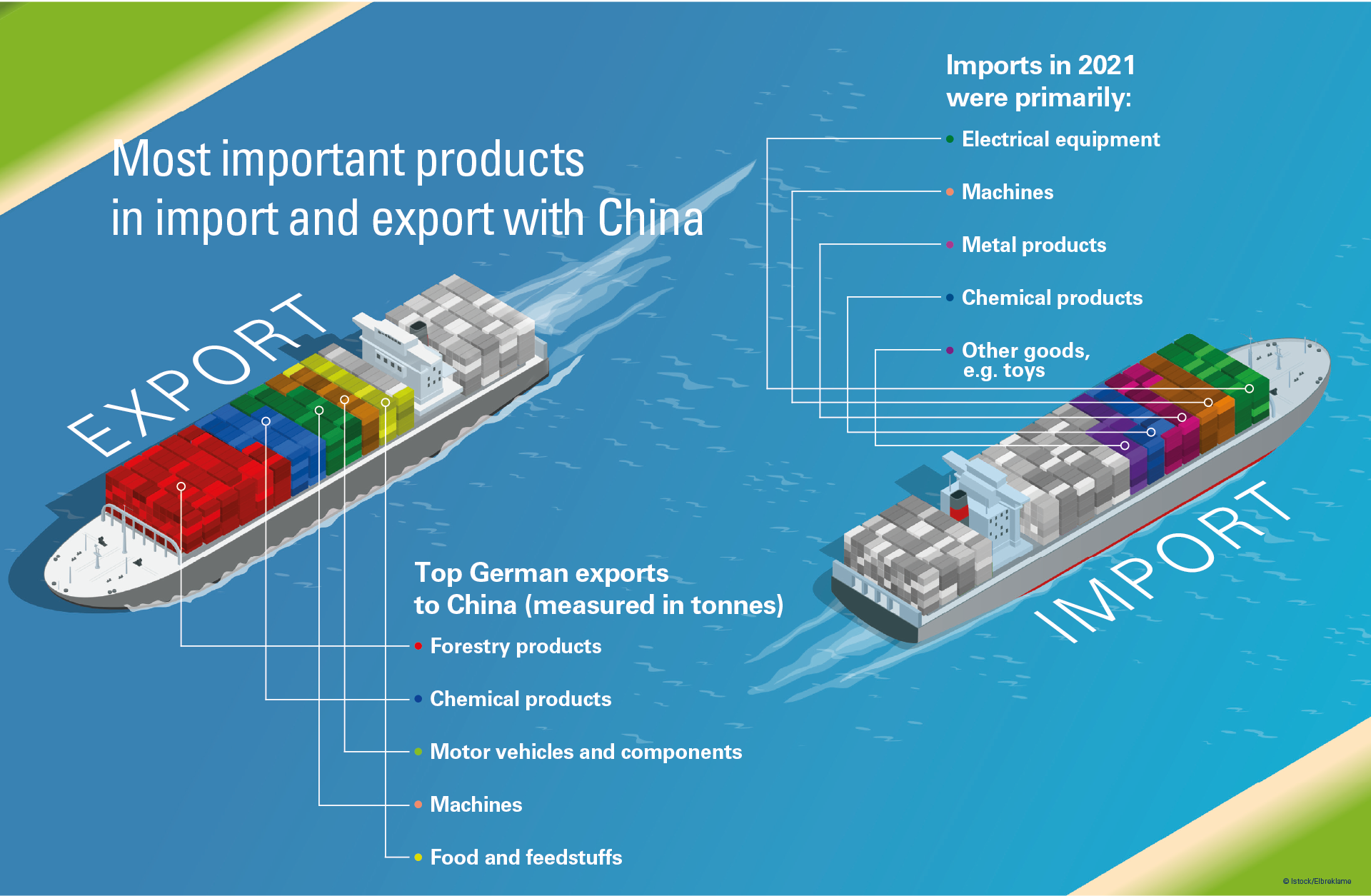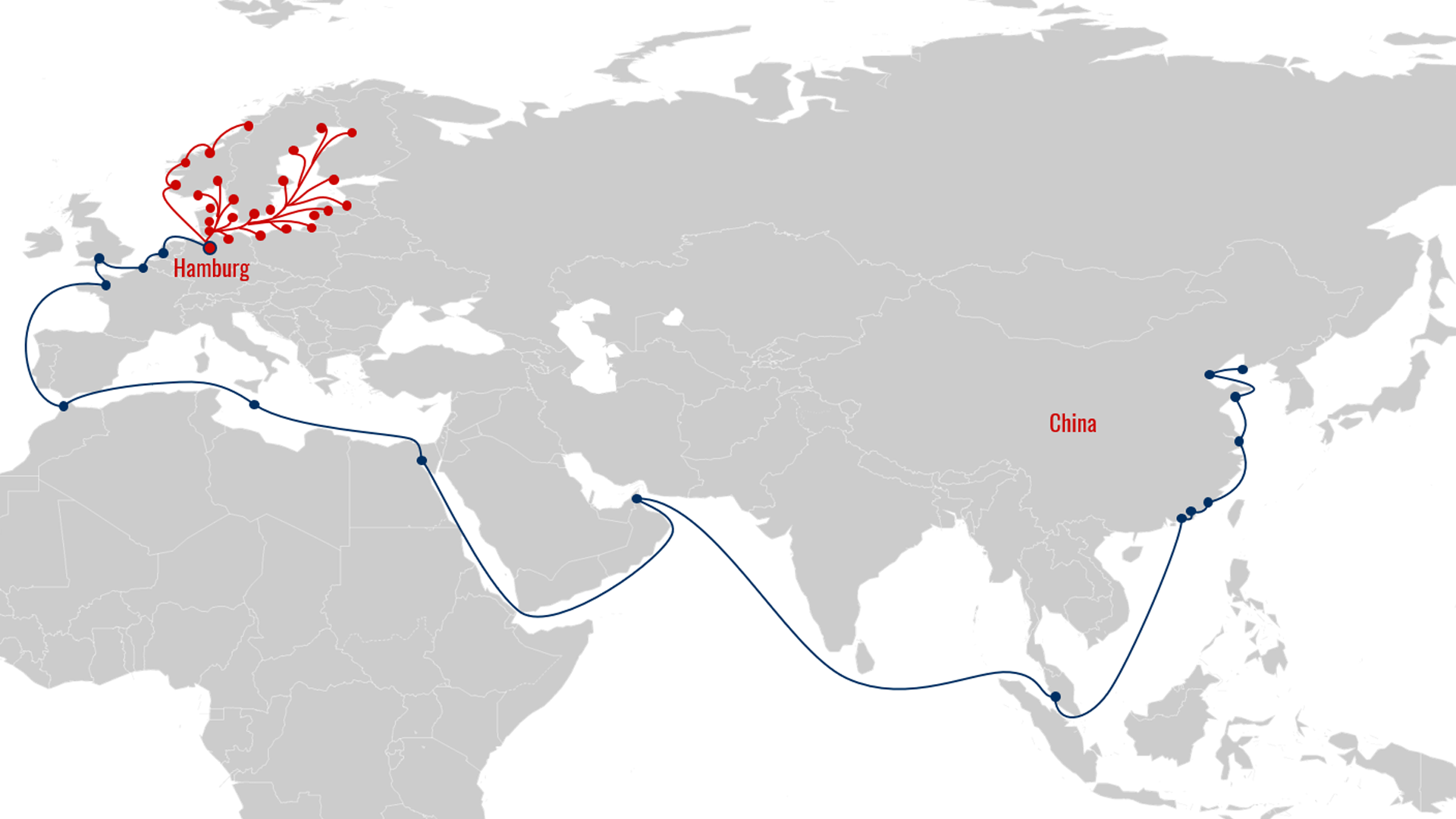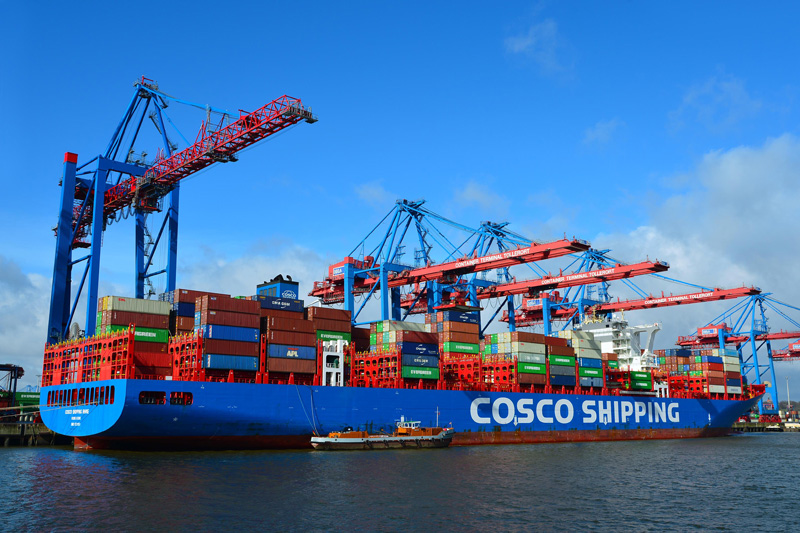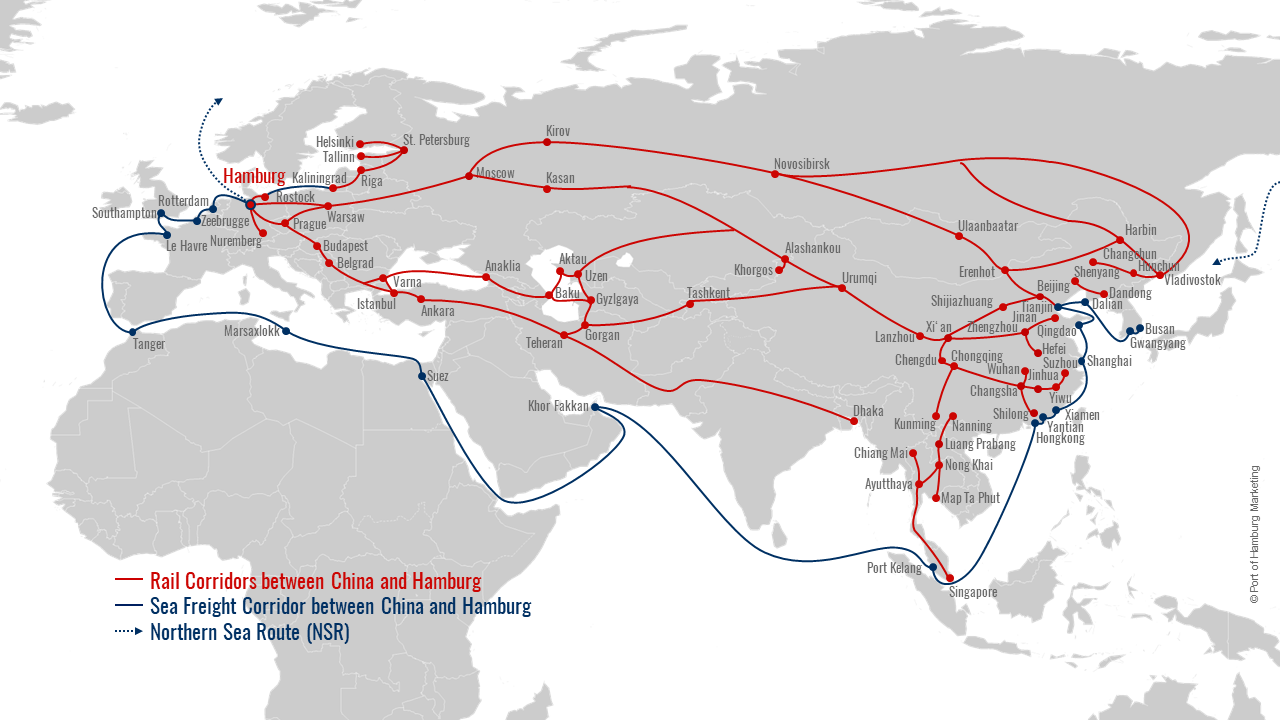Liner Services
In the liner services database you can find all the regular connections of the Port of Hamburg in sea traffic as well as in feeder and short sea traffic.
Economic relations between China and Germany have intensified in the last decades. On the one hand, many German companies are active in the People's Republic and serve one of the largest markets in the world. On the other hand, many imports from China are very popular with German and European consumers. According to the Federal foreign trade statistics, China was Germany's strongest trading partner for the sixth year in a row in 2021, reaching a value of 245.97 billion euro. Many of these goods pass through the Port of Hamburg as the central interface between maritime and hinterland transport.
"For a long time, the Port of Hamburg has been a central port of call for goods to and from China. This has given rise to a wide range of partnerships that the Port of Hamburg cultivates."

In 2021, China was Germany’s largest trading partner for the sixth time in a row, with a trade value of over 245.97 billion euro. According to foreign trade statistics, this corresponds to a year-on-year increase of 15.4 percent.
In maritime transport, it is customary to count volumes in tonnes. In 2021, 25.1 million tons of goods were transported between Germany and China.
Approximately 80 percent of trade with China is conducted by sea. Accordingly, seaports are of utmost importance for the exchange of goods with Germany's largest trading partner. On a tonnage basis, the Port of Hamburg's share of Germany's total trade with the People's Republic can be estimated at close to 40 percent.
The shares of the various products in the overall trade with China have shifted in recent years. The changes in forestry products are particularly noticeable in German exports. For the last three years, there is been a particularly large amount of (round) wood that was transported to China. This was mainly calamity wood from conifers such as spruce, particularly suffering from the bark beetle infestations and as a result had to be cut down urgently. In total, Germany exported goods with a total weight of 10.4 million tons to China in 2021.
Imports from China to Germany continued to exceed exports with goods weighing 14.7 million tons in 2021. Electrical equipment, machinery, metal products, chemical products and other consumer goods such as toys made up the majority of these imports.

In 2021, the Port of Hamburg handled a total of 2.561 million TEUs in direct trade with China (both import and export). This corresponds to 29.4 percent of the Port of Hamburg's total container throughput in that year putting the People's Republic of China at the top of the list of the port's trading partners once again.
Although trade with China is also subject to fluctuations, the share of "China cargo" in Hamburg has maintained the value of approximately one third of the total turnover over the years. In general, trade with China is highly containerized (import: 99.9 percent, export: 99.2 percent), but China is also by far the Port of Hamburg's largest trading partner on a tonnage basis.
The Port of Hamburg is one of the most important hubs in Northern Europe for hinterland transports and transhipment traffic. This also applies to goods traded with China. Around 20 percent of these are transhipped to their final destination in Hamburg, for instance, or continue on to China from their points of origin via Hamburg.

China is the Port of Hamburg's most important trading partner. Hamburg is directly connected to Chinese ports via 15 regularly scheduled services (2022). These include ten container cargo and four general cargo services, also carrying heavy cargo, as well as one RoRo service, additionally transporting general cargo.
The container services generally run weekly, while the general cargo services run once or twice a month or as required.
In China, all major ports in important economic centers as the Yangtze River Delta around Shanghai, the South China Pearl River Delta and the Bohai region are served and other ports can be reached by transhipment. Depending on the port, direction and rotation, transit times range from 18 days to/from Southern China to 35 days to/from the coast in the northeast of the country. Container ships serving these routes have slot capacities for up to 24,000 standard containers (TEU). General cargo ships carry between 20,000 and 30,000 metric tons and are equipped with on-board cranes capable of lifting up to 640 metric tons in combined operation.
All of the Port of Hamburg's liner services in intercontinental maritime traffic and in European feeder and shortsea traffic with some 950 destinations in 178 countries, as well as contacts with around 100 agencies and liner shipping companies, can be accessed online in the Liner Services database.


Hamburg and Shanghai have been twinned in a city partnership since 1986. For China, the Hanseatic city is the Gateway to Europe – and Hamburg is seen as the ideal bridgehead to China. Germany’s and China’s second largest cities are in close contact, further reinforced in 2004 by a port partnership. Another port partnership was initiated with the Southern Chinese port of Shenzhen in 2007.
Since 2013 the Port of Hamburg has aimed to further improve relations through strategic cooperation agreements with additional rapidly growing Chinese mainland ports:
These port cooperations are expected to expand and deepen through mutual visits and cooperation at the operative level between port authorities.
In Shanghai, the point of contact for the economic exchange between the partner cities is the Hamburg Liaison Office China (HLO). This is jointly backed by the Senate Chancellery of the Free and Hanseatic City of Hamburg, Hamburg Marketing, Hamburg Invest, Hamburg Tourism, the Chamber of Commerce and Port of Hamburg Marketing.

